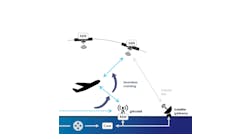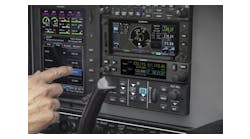Dual-use parts -- those parts that can be used on both military and civilian aircraft -- are prevalent in the rotorcraft industry. It makes sense, a lot of technology starts life under a Department of Defense (DOD) procurement. The government’s request for proposal requires the design of aircraft (or system or part) be “certificated by the Federal Aviation Administration.” Therefore, type certificates are issued on designs that may or may not be produced under an FAA-issued production approval and/or issued a standard certificate of airworthiness.
After the original contract is let and the aircraft delivered, the military starts making design changes, which may or may not be incorporated in the “civilian” version of the article (i.e., the design recognized by the FAA). Similarly, contracts in the DOD repair business require the “qualified” candidate hold a Part 145 repair station certificate even though the work performed for the government will not be under the jurisdiction of the FAA. Cross-utilization of different regulations with contractual obligations has created unresolved issues for the FAA and the industry.
First is the issue of whether a part was “designed and produced” in a manner that allows use in a civilian article (be it an aircraft, engine, or component). The FAA’s regulations and guidance material recognize that the quality systems used to produce military helicopters can result in airworthiness. Rotorcraft originally designed and produced for and operated by the military are issued certificates of airworthiness; granted, some are limited, but plenty of standard certificates have also been issued. That general understanding does not translate to the daily installation of parts where we have continual issues of eligibility for installation.
The use of an FAA Form 8130-3 to document maintenance, preventive maintenance, or alteration of a dual-use part is similarly questioned. When the article is only eligible for installation on a military helicopter, the use of the form becomes even more contentious. The bottom line is that the FAA only has jurisdiction over the maintenance, preventive maintenance, and alteration of articles that will be installed in aircraft with U.S. certificates of airworthiness, so asking for an FAA form on a “military only” part is a contractual anomaly (since it doesn’t mean anything) rather than an FAA violation.
Clear delineation by the government agencies on these issues is probably never going to happen. The only thing that should be black and white is whether an article is airworthy. In order to be labeled with that distinction, the article must meet an approved design and be in condition for safe operation. If the article (be it piece part or component) is not even part of an approved design, it is hard to label it airworthy. Yeah, I know, simple for me to say!
Sarah MacLeod is executive director of the Aeronautical Repair Station Association (ARSA), an organization she helped found more than 25 years ago. She is a managing member at the law firm of Obadal, Filler, MacLeod & Klein, P.L.C., and is engaged in the legal representation of foreign and domestic air carriers, aircraft maintenance and alteration facilities, distributors, pilots, and other individuals and companies in federal court and before federal administrative bodies. She also serves as assistant chair for Air Carrier and General Aviation Maintenance of the FAA’s Aviation Rulemaking Advisory Committee, a post she has held since 1996. A globally recognized expert in aviation regulatory compliance, Ms. MacLeod is a sought-after speaker and has appeared a numerous aviation and MRO events. She is admitted to the bar in Virginia. For more information visit www.arsa.org.




